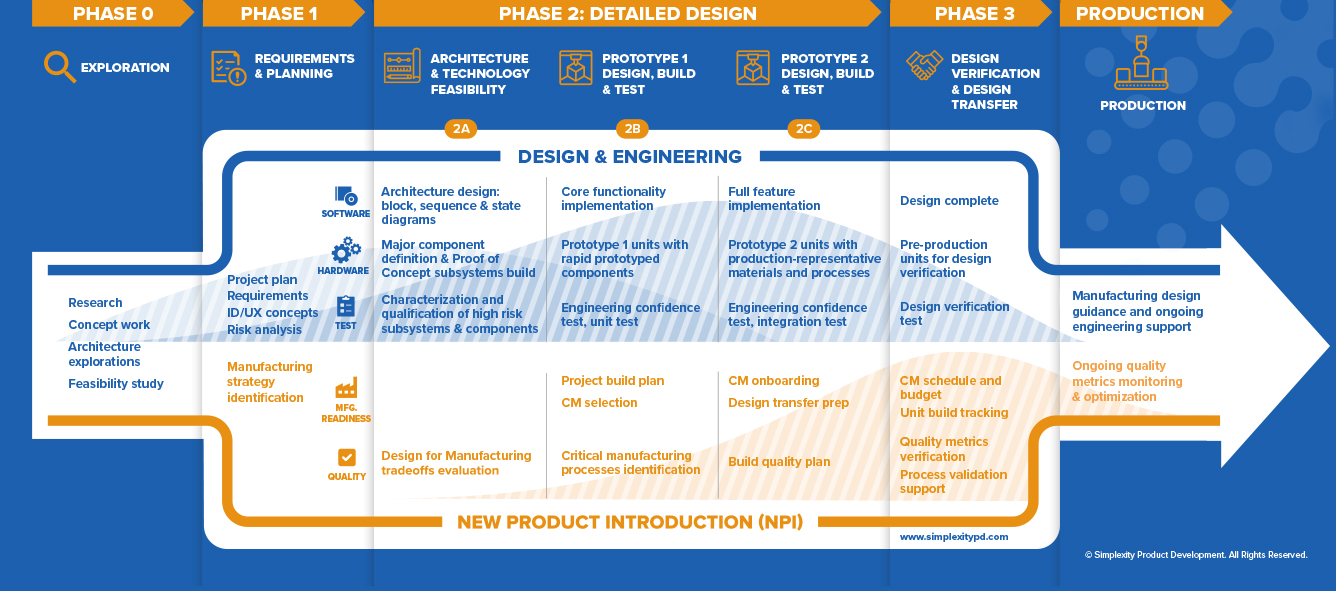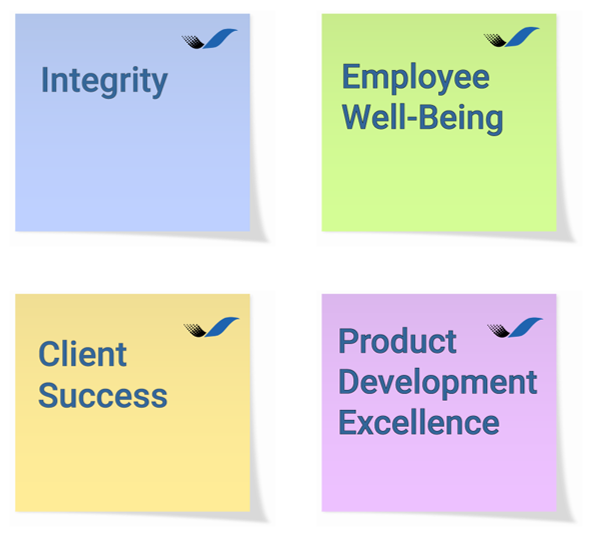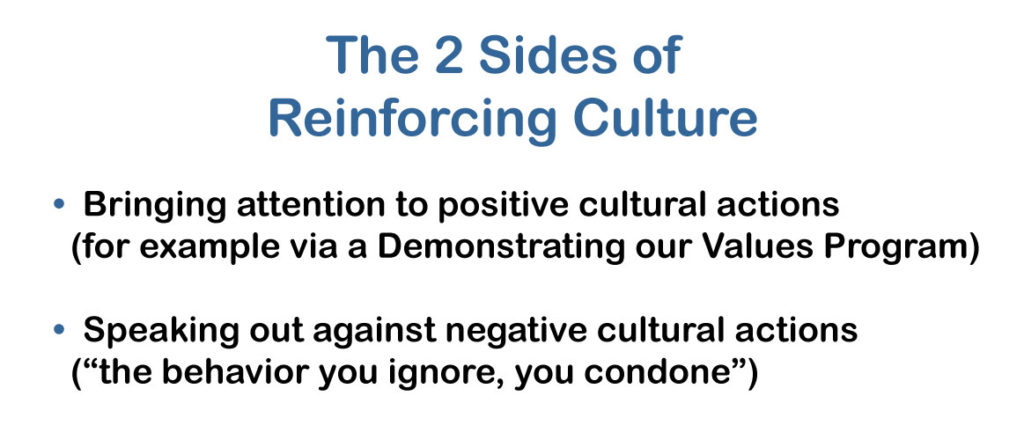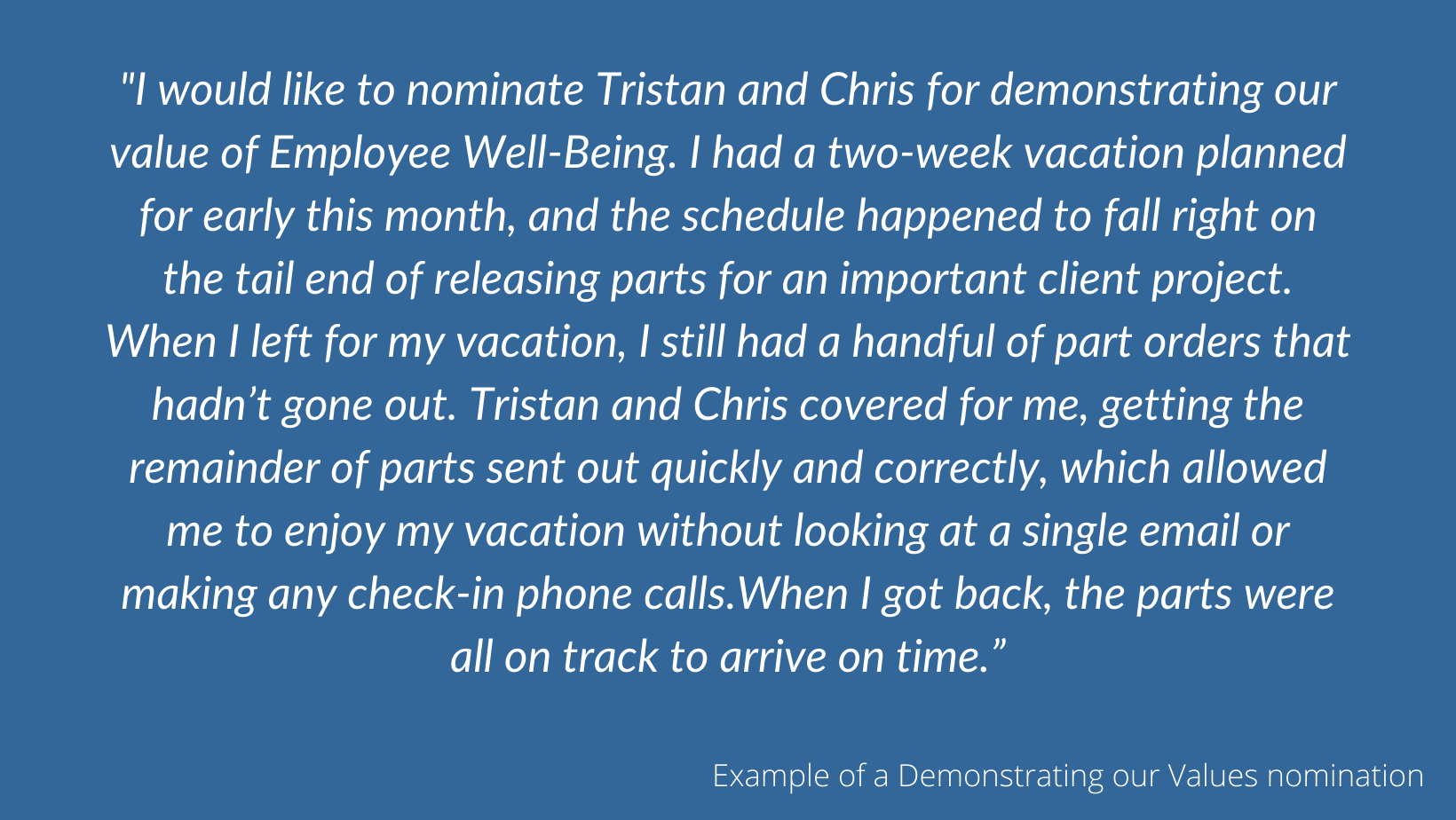Updated: March 4, 2022
When the Portfolio and Project Leaders Forum (PPLF) asked me to speak at one of their quarterly meetings, I was excited to share Simplexity’s views on Company Culture. Since members come from a wide spectrum of industries, including commercial, government, and non-profit, they were interested in our perspective as an organization where all our work is project-based. They wanted to hear what we have done to build a culture that enables project teams to work together effectively both before and during the pandemic.
To better understand our culture, it helps to have a feel for the type of company that we are, since that informs how we perform our work. We are a contract engineering design services company, and most of our clients are large technology leaders who hire us to perform product development work. Our areas of expertise include mechanical, electrical, firmware, software, and systems engineering, as well as project management, manufacturing engineering, quality engineering, new product introduction (NPI), and prototyping. Usually, we are working with the client’s engineering team to develop new products. That means that communication, both internally between our teams and with the client, is paramount for project success.
Employee Testimonial: Collaborative Development Environment
Simplexity’s product development process includes both engineering of the product and often also helping with New Product Introduction for those clients needing assistance with transferring a product to manufacturing. These processes are incredibly integrated within the culture of Simplexity, since our Director of New Product Introduction is also a principal project manager in the company who understands both the engineering and the transfer to production side. This integrated culture is intentional since it helps drive an efficiency that would not be possible with two disparate teams.
Below is a word cloud of the most common descriptive words used to describe Simplexity’s culture by our employees from an Inc Best Places to Work survey. The larger and bolder the word, the more often it was used to describe our culture.
This aligned with how I have heard our culture described in casual conversation, since employees want challenging and interesting work, but also highly value the flexible, respectful, friendly, and fun environment that we have. This culture allows employees to pursue and achieve excellent project results in an engineering organization like ours.
I am a culture evangelist. I am always looking at the decisions that we make as an organization through the lens of culture. I want to make sure we have an excellent culture, most importantly so we have engaged employees who truly love their work yet also because having a strong culture is integrated with better financial results for the company allowing us to continue to grow, hire, and retain our dedicated employees.
Employee Testimonial: Simplexity Values and Culture
As a consulting company, all our engineers are customer-facing. This means that we must hire and retain engineers who have a high level of both technical talent and strong inter-personal skills. Thus, during the recruiting and hiring process, we screen not only for technical aptitude but assess the candidates for cultural fit and flexibility.
To hear more about the importance of company culture, hiring talent, and the reasons offering flexible employment is so important, listen to the video clip below presented to PPLF:
The 5 Steps of Building an Excellent Company Culture
How do we build an excellent company culture?
1: Start with trust. Trust is #1. If we don’t trust our employees to get their work done no matter where they are, then no further culture building steps will work. Trust has to be given before it is received. I recommended giving people the benefit of the doubt first and trusting them, rather than the notion that trust must be earned through actions and deeds first.
2: Once you have established trust on the team, then decide and write down your core values as an organization. With core values, less is more. Don’t be tempted to write down every good action that you want people to follow. It’s better to have a few core values that everyone remembers rather than ten values that often get forgotten. The values should also reflect what is most important as an organization. They are what allow employees to make decisions without checking in with you on each little item, since they guide the behavior that is encouraged by the organization.
Simplexity’s Core Values:
Hear more about the four Core Values that guide us:
Product Development Excellence
|
Employee Well-Being
|
|
Client Success
|
Integrity
|
To hear more information about what these core values mean for Simplexity and guidance around setting core values for your organization, listen to the video clip below presented to PPLF:
3: The third step in creating an excellent company culture is to encourage constant improvement (a Kaizen method). Most of the processes at Simplexity have been developed via a bottoms-up approach. This means that the employees who are closest to the work are the ones who define the processes. Anyone can speak up with suggestions to improve a process (although often that means they get tasked with helping to see that the ideas for improvement get buy-in from people most intimate with the process and then implemented company-wide). This constant improvement practice allows the culture to evolve as the organization grows, while still in the framework of living up to the core values. How the work gets done may change, but why it gets done usually does not.
Employee Testimonial: Part of a Greater Whole
4: Transparency and communication are key for any healthy culture, no matter which core values you choose. This means letting your employees know what you’re doing, why you’re doing it, and having an open-door policy to answer questions. If you want teams to work together effectively, they not only need to understand what you are doing from a company standpoint, but what other teams are doing and be able to freely communicate with one another.
5: Once you’ve gone through the first four steps of building an excellent culture, then the last step, reinforcement, is key. You can’t just define your core values, stick them on a wall and never talk about them again. They must be integrated into the daily behavior of all employees. There are two sides to reinforcing culture:
At Simplexity, our Demonstrating our Values Program means that any employee can nominate any other employee for living out our values. These employees are then recognized at the monthly all-employee company meeting and receive a gift certificate for lunch. Even though we do not have Simplexity’s four core values posted on a wall, all employees know what they are. This is because every month people are reminded of them since they are hearing stories about how their co-workers live out the values.
Employee Testimonial: Employee Recognition and Support
Equally important is to not allow behaviors that are counter to the core values to be accepted. As much as you want to celebrate the good behaviors, the rubber meets the road when you see or hear bad behaviors. Do you nip them in the bud? Or do you ignore them because they are not that serious, and you don’t want to have an uncomfortable conversation? The offense is usually just barely stepping over the line, for example cursing in the workplace. Minor cultural infractions are not typically done intentionally but are simply a slip up. In the case of someone exclaiming with a swear word, I could just ignore it, but I choose to speak up and ask people to watch their language since it doesn’t make for a professional atmosphere (affecting the Employee Well-Being value for other employees around the person cursing). If employees see you ignoring even minor cultural infractions, then they make the conclusion that that value isn’t really all that important (hence by inaction, the negative behavior is condoned).
Adapting our Culture amid COVID-19
Since the middle of March 2020, the majority of our employees moved predominantly to a work-from-home model throughout the COVID-19 pandemic. So how did this affect our culture?
While it was not as difficult a transition for us as it had been for some companies (see my Top 5 Policies to Successfully Work from Home blog), it meant that we put Step 3 of Constant Improvement and Step 4 of Transparency and Communication into high gear. Since we are no longer around one another constantly as we were before the pandemic where organic conversations just happened naturally, communication had to become more intentional. The executive management team became even more transparent with our communication around the health of the company and what we had to do to maintain jobs and the financial success of the company during down times. We improved our IT systems, adapted our shipping and receiving processes to allow packages to be delivered to employees’ homes, and created a whole new set of processes around disinfection, wearing masks, and keeping employees safe when they chose to be in the office.
Some additional adaptations we made since the beginning of the pandemic include:
- Increased use of video conferencing. While we have been using video conference software for years, now we use it all the time for every meeting. The positive spin on the situation is that it matters a lot less as to which of Simplexity offices you work in. Any other employee is just a video call away.
- Switching from a culture of shared eating and celebrations to care packages of snacks during the times we couldn’t be together. Our monthly company meetings had traditionally been over lunch, with most people attending in person in their respective offices and a Zoom conference call between the four offices linking us together. During the pandemic, all employees were on the Zoom conference call independently. We also had different themed meetings such as when we asked each employee to pick a virtual background of a “place they’d rather NOT be” while wearing their masks during the height of the pandemic. Keeping some humor through the situation has helped maintain our sense of connectedness and Employee Well-Being. As we are coming out of the pandemic, we have embraced a hybrid model where some meetings are in person again with lunch, but every employee has the option to call-in via Zoom if they prefer.

- Increased flexibility. While the word “flexible” was already our most mentioned descriptor in the Best Places to Work survey, we have been even more flexible. Employees with young children had to balance parenting with work and home schooling while daycares and schools were closed through portions of the pandemic. In addition to people working truly whenever is convenient for them, we have encouraged reduced work schedules and other adaptations to allow people to keep working and living their lives simultaneously.
- Finding ways to make a difference. Simplexity engineers want to make a difference in the world in addition to doing their jobs. Given our skill sets, we have done what we can to help the fight against COVID-19. This includes helping clients in the Molecular Diagnostics space who are developing the next generation of COVID-tests such as Anavasi, as well as volunteer and company-sponsored projects to design and build Personal Protective Equipment (PPE) when the shortage was at an all-time high. We also volunteered for projects such as building hospital intubation boxes for healthcare workers and face shields for first responders.
- Giving back to our community, virtually. In addition to making a difference in the fight against Covid-19, we have been supporting students in STEM (Science, Technology, Engineering, and Math) fields. Every year we dedicate a portion of our time to student groups such as Green.Griffins, Stormbots, and various MESA (Mathematics Engineering Science Achievement) organizations in Oregon, Washington, and California. During the pandemic, we transitioned our volunteering to video interaction and even hosted a virtual career visit.
Watch the Virtual Career Visit featuring Simplexity CEO, Dorota Shortell,
and Simplexity engineers, presented to Oregon MESA students
A strong culture is the glue that holds an organization together, even amid challenges like a pandemic. A culture that values employees allows them to work effectively, delivering excellent results to clients. No matter which core values or characteristics of a strong culture you choose to adopt, if you take care of your employees first, they will take care of your clients, who will in turn bring the company more business, allowing you to hire even more great employees. It is a virtuous circle that you can put into motion.
Employee Testimonial: Company Culture and Work/Life Balance
As we hope to soon put the pandemic behind us, we look forward to sharing more in-person time together with our colleagues both in the office and out of the office at events, happy hours, and picnics. We will continue to offer the flexibility our employees value by evolving our new hybrid model, while always keeping our values of Employee Well-Being, Client Success, Integrity, and Product Development Excellence at the core.
If you or someone you know values culture and loves engineering as much as we do, please check out our open positions or send them our way! We are always looking to hire exceptional team members who share our core values.







